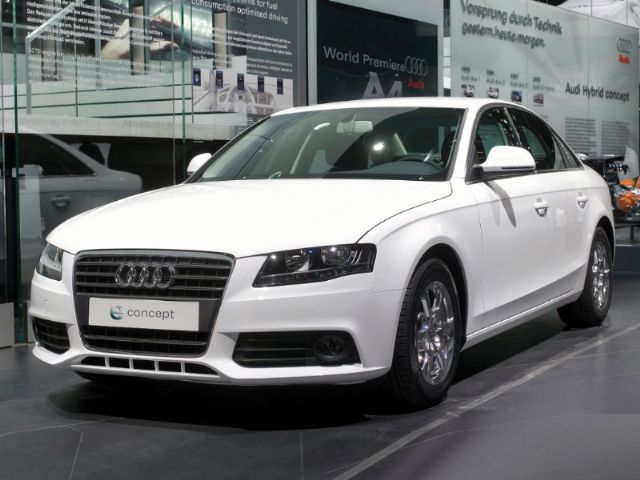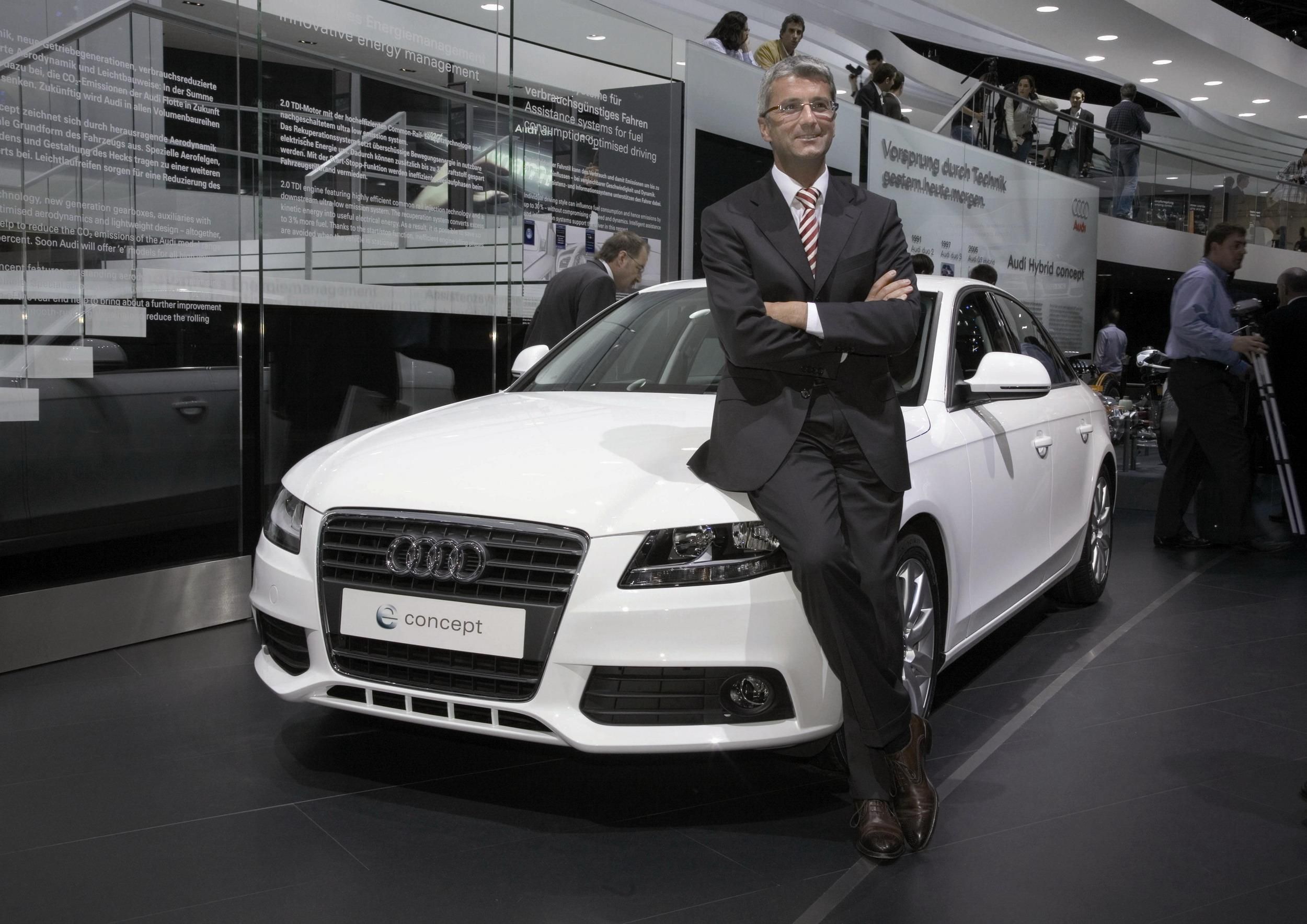More dynamism with less and less fuel consumption – Audi is pursuing a consistent strategy to achieve further reductions in emissions. With three concepts that are virtually ready for series production, Audi is using the IAA to present the technology of the near future. The new A4 2.0 TDI e Concept consumes just 4.9 litres of fuel for 100 kilometres, and thus represents a milestone in the sporty middle class.
2007 Audi A4 2.0 TDI e Concept
- Make: Array
- Model: 2007 Audi A4 2.0 TDI e Concept
- [do not use] Vehicle Model: Array
With the new 2.0 TDI e Concept, Audi is showing just how effective its new Modular Efficiency program is. The sporty middle class saloon undercuts the consumption limit of five litres per 100 km.
The A4 2.0 TDI e Concept needs just 4.9 litres for 100 km on the EU cycle. This means CO2 emissions of just 129 g/km – less than the limit that the European Union aims to introduce for vehicle fleets from 2012. With an output of 105 kW / 143 bhp and a peak torque of 320 Nm, the A4 2.0 TDI e Concept is a powerful saloon – for Audi, a dynamic character always goes hand in hand with low consumption.
In this vehicle, Audi has realised a whole package of innovative engineering solutions. Some of these are already in series production on the new Audi A4. Others, such as the start/stop system or the energy recuperation system, will be introduced in the near future.
TDI marries efficiency with dynamism
The 2.0 TDI in the new Audi A4 presents itself in an essentially enhanced form. A common rail injection system supersedes the unit injection pumps used to date, its piezo injectors supplying fuel with a pressure of up to 1,800 bar, allowing extremely fine atomisation in the combustion chambers. This improves fuel combustion and smooth running.
The refined engine develops a powerful 105 kW / 143 bhp of output. Even in the speed range between 1,750 and 2,500 rpm it puts a bullish 320 Nm of torque onto the crankshaft – this mighty pulling power at low revs is a one of the great strengths of the TDI principle. Modified piston geometry improves the thermodynamics in the combustion chambers. Other measures to reduce internal friction and for temperature management further increase fuel efficiency. On the A4 e Concept, the 2.0 TDI engine is supplemented by the ultra low emission system. That means that this engine not only works highly efficiently,
but it is also exceptionally clear and absolutely future-proof: Even today, it undercuts the strictest European emissions levels, which are not expected to come into force until 2014. The ultra low emission system, which makes the TDI the world's cleanest diesel, will go into series production in 2008 as an option on the new Audi A4 3.0 TDI.
Low-friction gearbox
The TDI's power is transmitted onto a newly developed six-speed manual gearbox that is characterised by greatly reduced internal friction. It has been specially tailored for the high-torque of the TDI engine – its transmission ratios are slightly longer in third to sixth gears. Like all Audi gearboxes, its gear changes are playfully light and extremely precise. The gear change indicator in the driver information system encourages an economical driving style. It indicates which gear is selected and if another gear is judged to be better while driving steadily, it will show this as a recommendation.
An especially fast and smooth start
Another important contribution is made by the start/stop system. It avoids the engine running inefficiently when the vehicle is stationary. This is important because much of our day-to-day driving is made up of trips that are shorter than ten kilometres, and these are interrupted by numerous stops at traffic lights. As soon as the A4 2.0 TDI e Concept comes to a standstill, the gear lever is moved to neutral and the driver takes his foot off the clutch, the TDI is automatically switched off. The engine is restarted when the driver depresses the clutch. The TDI runs up while he is engaging the gear. It has reached idling speed by the time he releases the pedal. A specially developed starter motor turns the engine in little more than two tenths of a second – 60 percent faster than a conventional part, and yet especially comfortable acoustically.
Microhybrid gathers energy when coasting and braking
The recuperation system on board the A4 2.0 TDI e Concept converts kinetic energy into useful electrical energy as the vehicle decelerates. An innovative gel battery is used as the power source for the vehicle electrical system. This is extremely robust even at high loads and when it is heavily discharged, allowing it to achieve a particularly long service life. When the A4 2.0 TDI e Concept is coasting or braking, the secondary voltage from the D/C converter is run up. The alternator is now able to convert the kinetic energy into electrical energy that is temporarily stored in the gel battery.
When the saloon subsequently accelerates again, the battery feeds the energy back, relieving the load on the alternator.
The power steering has also been thoroughly modified – its effectiveness has been improved by around 50 percent because it is now fed hydraulic energy by a demand-controlled vane-cell pump. In contrast to conventional power steering pumps, which constantly recirculate large volumes, it only pumps as much oil as actually needed at that very moment.
On the automatic air conditioning system, Audi uses an innovative, thermostatically controlled refrigerant circuit with an internal heat exchanger. Along with intensive precision work on other components, has greatly improved the efficiency of the system – the new automatic air conditioning system requires 20 percent less fuel that its predecessor model did.
Sporty performance yet highly efficient
The A4 2.0 TDI e Concept glides smoothly and effortlessly through the wind. Its body is fundamentally extremely aerodynamic. Its boot lid has been given a slight additional separation edge. Specially designed alloy wheels improve the airflow across the wheels and wheel arches, while a sporty tuning has lowered the body by 20 millimetres. This modification reduces the frontal area, improving air resistance.
For Audi, efficiency means exactly the same as dynamics. For example, the tyres are configured for light running, but still have a sporty performance – they have the wide, visually attractive 225/50 R17 format. Yet the most impressive evidence of the potential of the A4 2.0 TDI e Concept is found in its performance figures. The middle class saloon sprints from 0 to 100 km/h in just 9.3 seconds. Its top speed is 215 km/h. A spurt from 80 to 120 km/h in 5th gear needs just 8.7 seconds.




